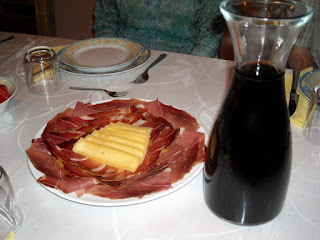On Friday we toke a day trip to Mostar.
Mostar is a city in Bosnia and Herzegovina, formerly one of the most ethnically diverse cities in the country, and today suffering geographical division of ethnic groups. The city was the most heavily bombed of any Bosnian city during the war in Bosnia and Herzegovina following the break up of then-Yugoslavia. At the beginning of the war, the city lost many important buildings and structures through air strikes; later, once the formerly-aligned forces turned into enemies, a thorough destruction of this old city began, including the destruction of Mostar's architectural (as well as cultural and spiritual) heart: The Old Bridge (Stari Most). Mostar has been most famous for this beautiful historic Ottoman-style bridge, which spanned the Neretva river in what is considered the historic center of the city. Through combined efforts with the international community, The Old Bridge has been rebuilt (completed in 2004, almost 11 years after its destruction), using some of its original pieces recovered from the Neretva river. A significant portion of the city has been rebuilt and visitors might be suprised to see that this formerly war-torn city is a lively and beautiful destination once again, particularly the area within and around the old town. Still, many visible signs of Mostar's troubled recent history remain. WIKI Travel
Mostar is a city in Bosnia and Herzegovina, formerly one of the most ethnically diverse cities in the country, and today suffering geographical division of ethnic groups. The city was the most heavily bombed of any Bosnian city during the war in Bosnia and Herzegovina following the break up of then-Yugoslavia. At the beginning of the war, the city lost many important buildings and structures through air strikes; later, once the formerly-aligned forces turned into enemies, a thorough destruction of this old city began, including the destruction of Mostar's architectural (as well as cultural and spiritual) heart: The Old Bridge (Stari Most). Mostar has been most famous for this beautiful historic Ottoman-style bridge, which spanned the Neretva river in what is considered the historic center of the city. Through combined efforts with the international community, The Old Bridge has been rebuilt (completed in 2004, almost 11 years after its destruction), using some of its original pieces recovered from the Neretva river. A significant portion of the city has been rebuilt and visitors might be suprised to see that this formerly war-torn city is a lively and beautiful destination once again, particularly the area within and around the old town. Still, many visible signs of Mostar's troubled recent history remain. WIKI Travel










